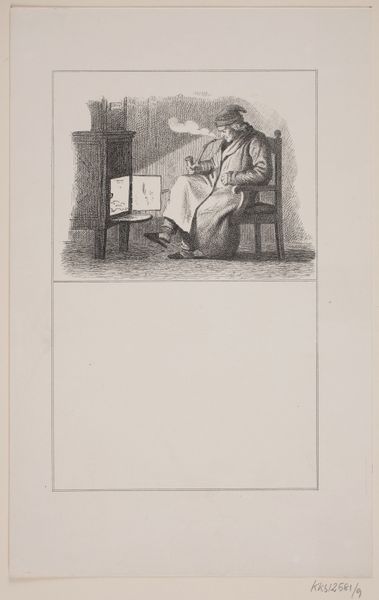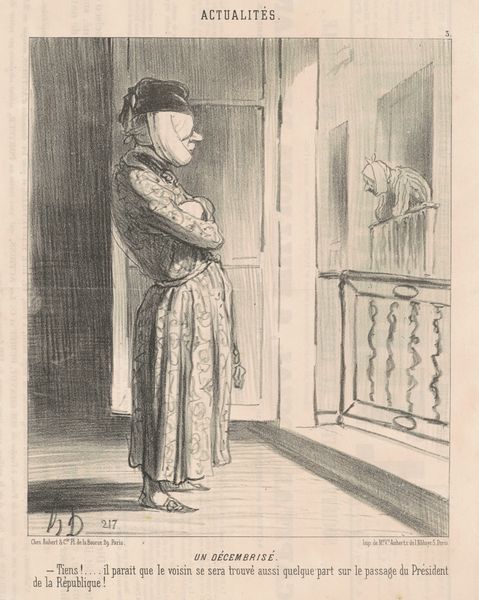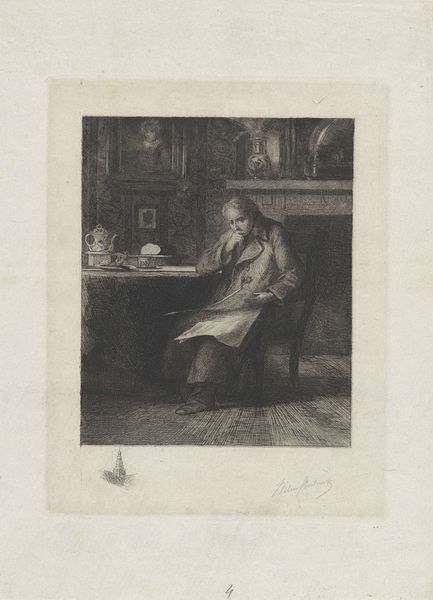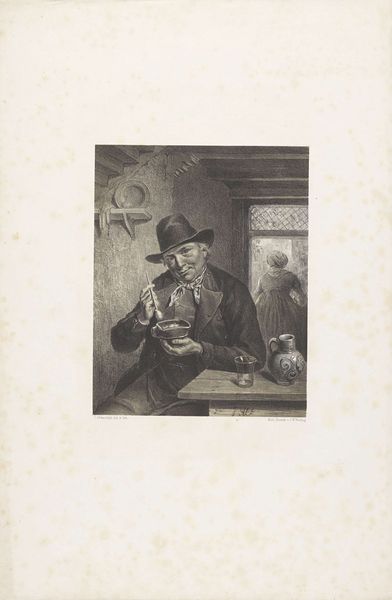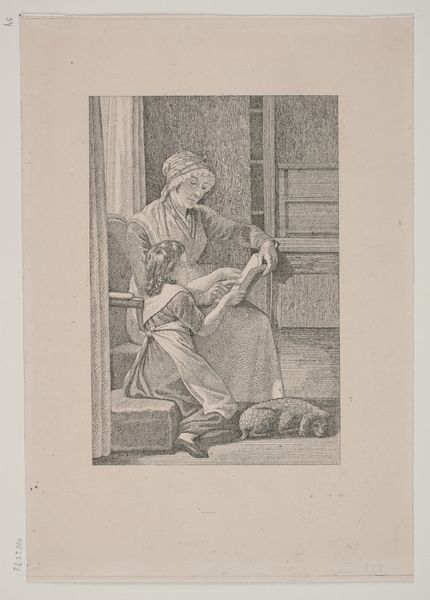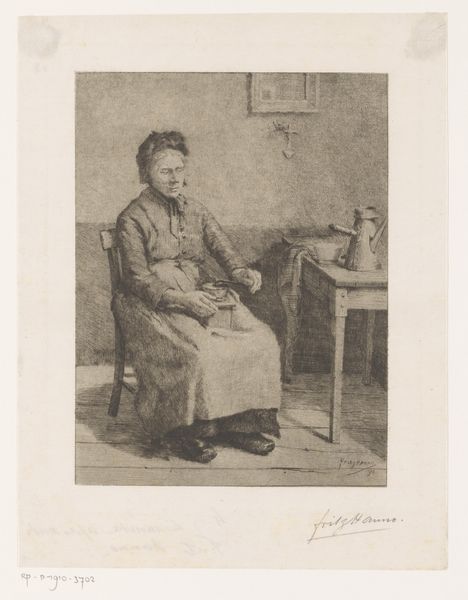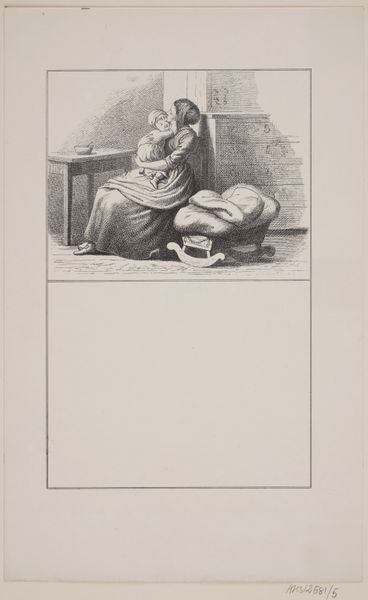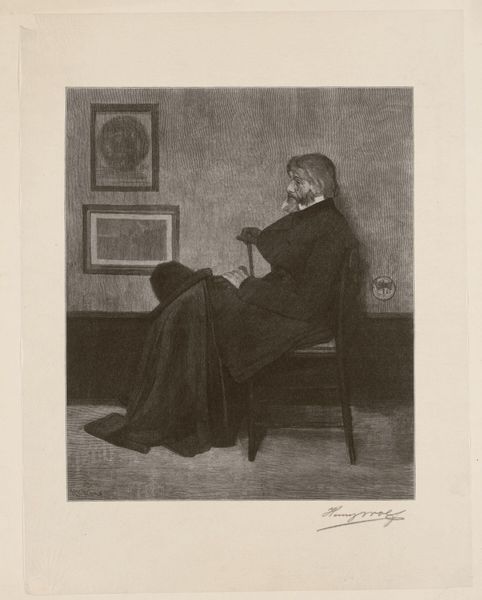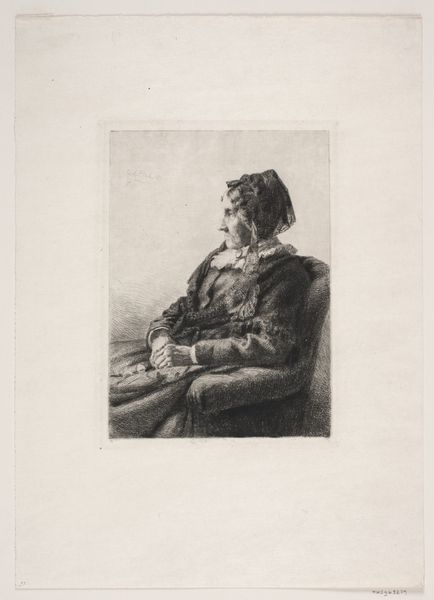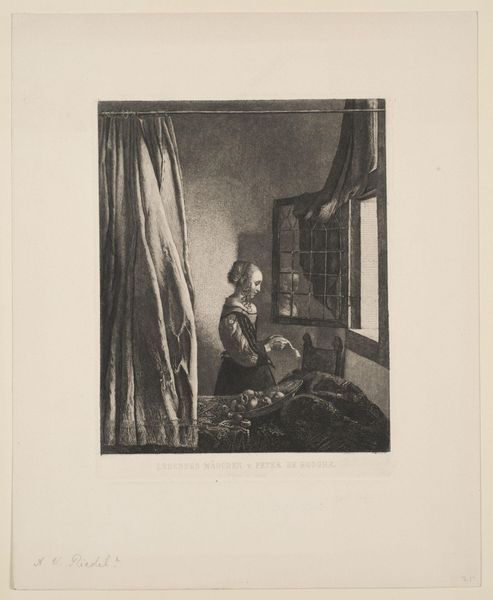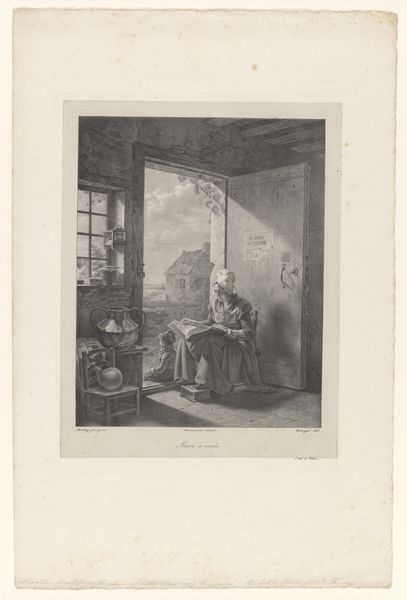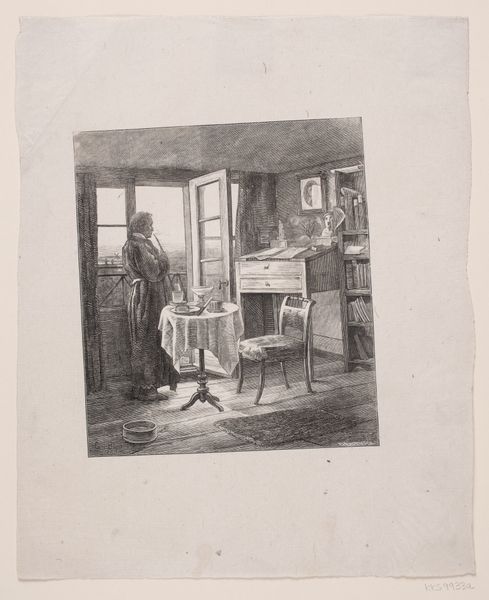
engraving
#
portrait
#
pencil drawn
#
charcoal drawing
#
portrait reference
#
romanticism
#
19th century
#
portrait drawing
#
history-painting
#
engraving
Dimensions: height 443 mm, width 331 mm
Copyright: Rijks Museum: Open Domain
Willem van Senus created this stipple engraving, “Portret van Abraham Arbou,” in 1815. During this time, the Netherlands was transitioning from French rule to establishing its own identity as a kingdom. The print portrays Abraham Arbou, a Black man identified as a "koffijhuisknegt," or coffee house servant, born in Leiden in 1735. While seemingly a straightforward depiction, it opens a window into the complex social fabric of the Netherlands, and Europe in general, during the late 18th and early 19th centuries. Consider how Arbou is presented: a Black man in service, yet the focus of a portrait. What does it mean to record his image? The very act suggests a recognition, a valuing of his presence despite his social position. His gaze is averted, perhaps indicative of his place in society. Yet, in the context of post-French revolutionary ideals, his depiction raises questions about representation, identity, and the narratives that are deemed worthy of preservation. Van Senus's print, therefore, invites us to reflect on the lives of individuals who existed on the margins and how their stories contribute to a fuller understanding of our shared history.
Comments
No comments
Be the first to comment and join the conversation on the ultimate creative platform.
